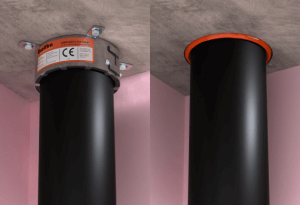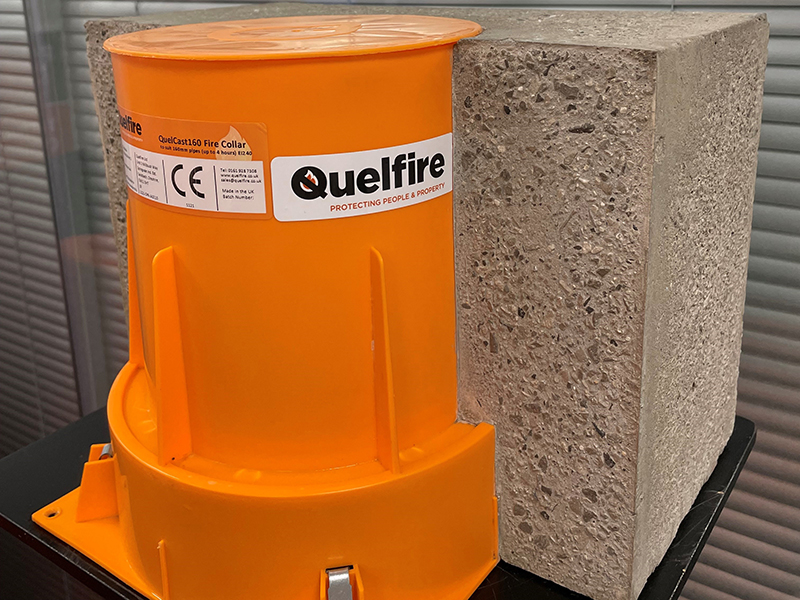What is a fire collar? Product Information
Fire collars, otherwise known as intumescent closure devices, help stop the spread of fire where plastic pipes pass through fire compartment walls and floors. It is a circular product that is fitted around the pipe and attached to a masonry, plasterboard, or concrete partition.
A fire collar consists of a metal shell, generally stainless steel, containing the active ingredient graphite-based intumescent. It is generally installed on both sides of a wall or the underside of flooring and has fixing lugs for mechanical fixings to secure it to the structure.
The role of the intumescent and the metal shell
Intumescent can be made from a variety of synthetic polymers and resin binders for example, silicone or epoxy. When it comes to passive fire protection, intumescent is an important component as it helps to maintain the compartmentation of a building by containing the fire to its area of origin.
Therefore, most firestopping products contain intumescent; however, this is not to say that all passive fire protection products need intumescent to work effectively during a fire. For example, flexible silicone joint sealants, acrylic sealants and some coated insulation boards are all firestopping products that are based on different chemical/ physical principles.
Intumescent swells in response to heat exposure, increasing in volume and decreasing in density. The volume substantially increases at high temperatures of around 200°C and forms a hard char, which works to essentially plug the gap in and around services penetrations where pipes have melted and created larger openings.
The metal shell that encloses the intumescent works to stop it from expanding outwards, containing the pressure in the circular space.
How does a fire collar work?
In the event of a fire, the plastic pipes will begin to melt. Due to the exposure of heat, the intumescent will expand and with the pressure exerted from the metal shell, the intumescent will seal the hole left behind. This prevents the fire and smoke spreading to the next compartment and reinstates the fire resistance of the wall or floor.

Fire collars are often referred to as crushing collars. However, it is important to understand that they work simultaneously with the plastic pipe melting; the intumescent alone cannot crush the pipe without the heat exposure that leads to the plastic pipe softening and melting.
What is the difference between a fire collar and a fire wrap?
Fire collars and fire wraps are two very similar products; they both achieve the same result when exposed to fire. However, the main difference is that whereas a fire collar has a metal shell, a fire wrap doesn’t. For fire wraps, the intumescent is contained in a red, polythene cover and secured using self-adhesive tape.
Due to the lack of a metal shell, this means that a fire wrap needs to be installed into a solid construction such as a concrete floor. The concrete effectively works in the same way as the metal shell, to stop the intumescent from expanding outwards.

A fire collar can be a highly effective solution for firestopping penetration seals, if installed correctly. Therefore, it is crucial to utilise all advice offered by the selected manufacturer when choosing the correct collar or on how to compliantly install it.
QWR Fire Collar from Quelfire
Learn more about the features and benefits of our QWR CE Marked Intumescent Fire Collar.

